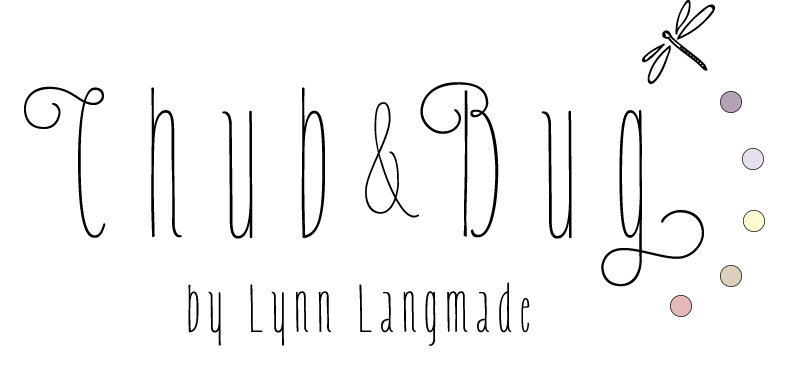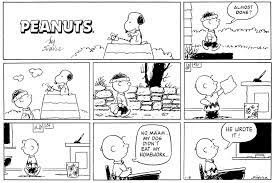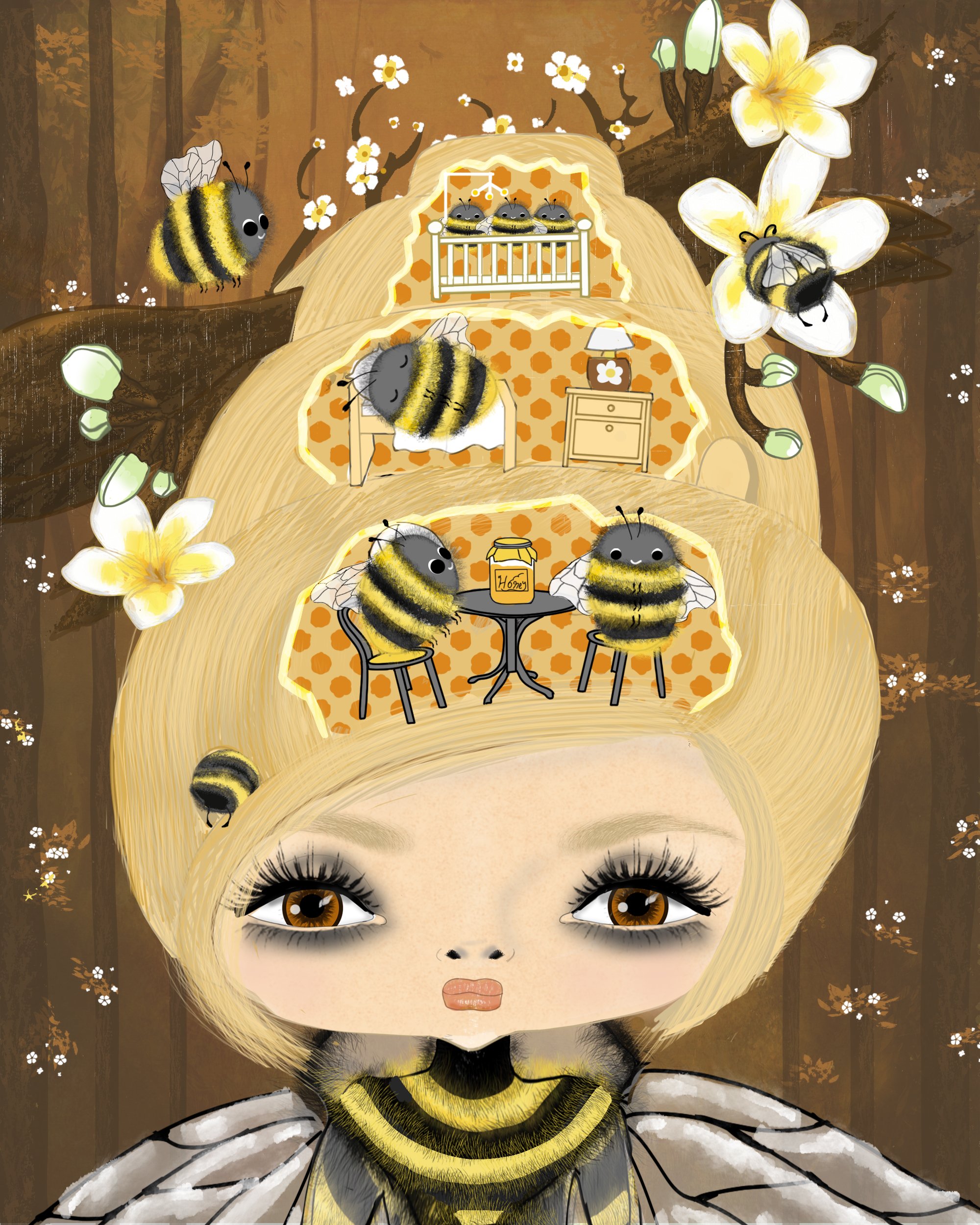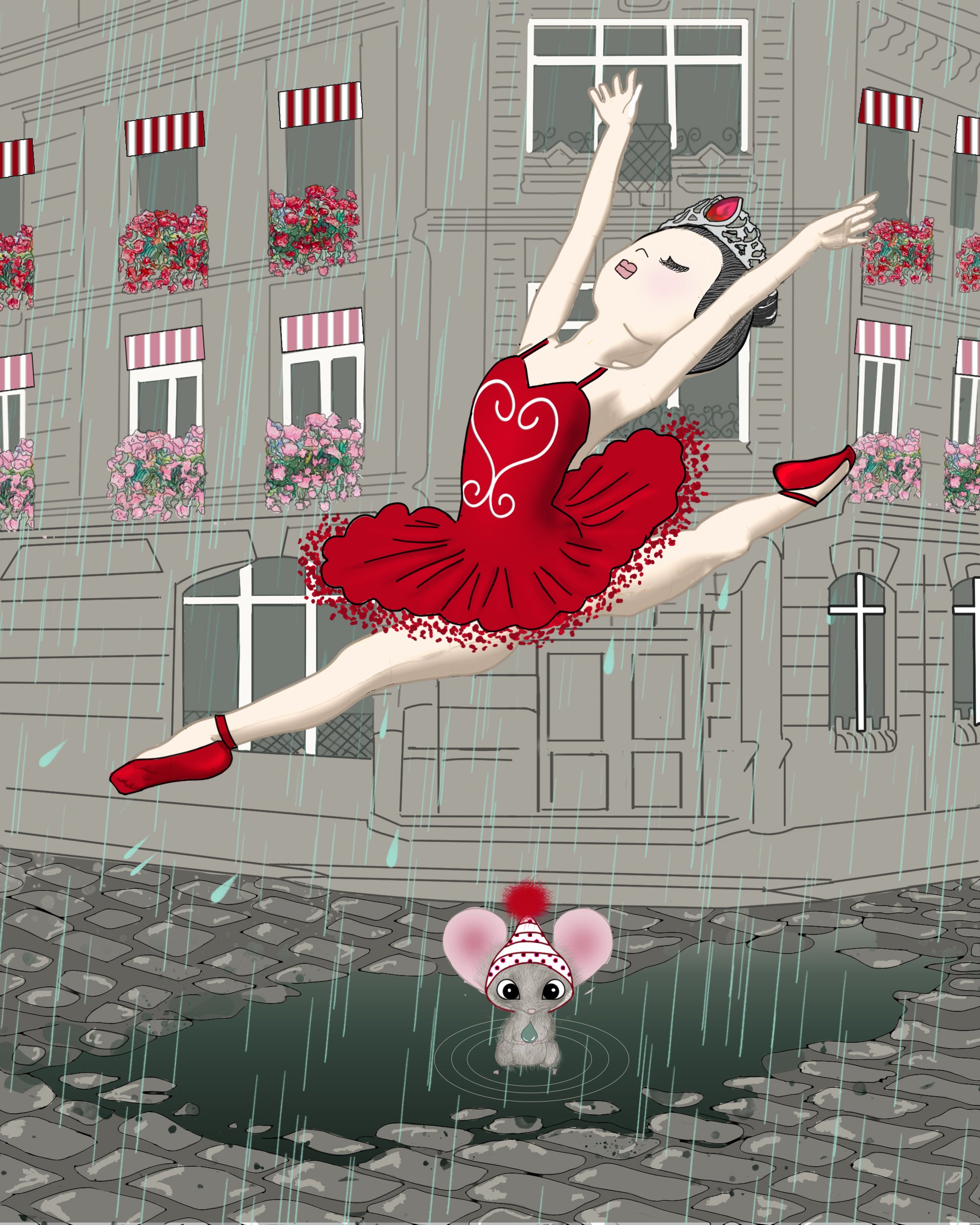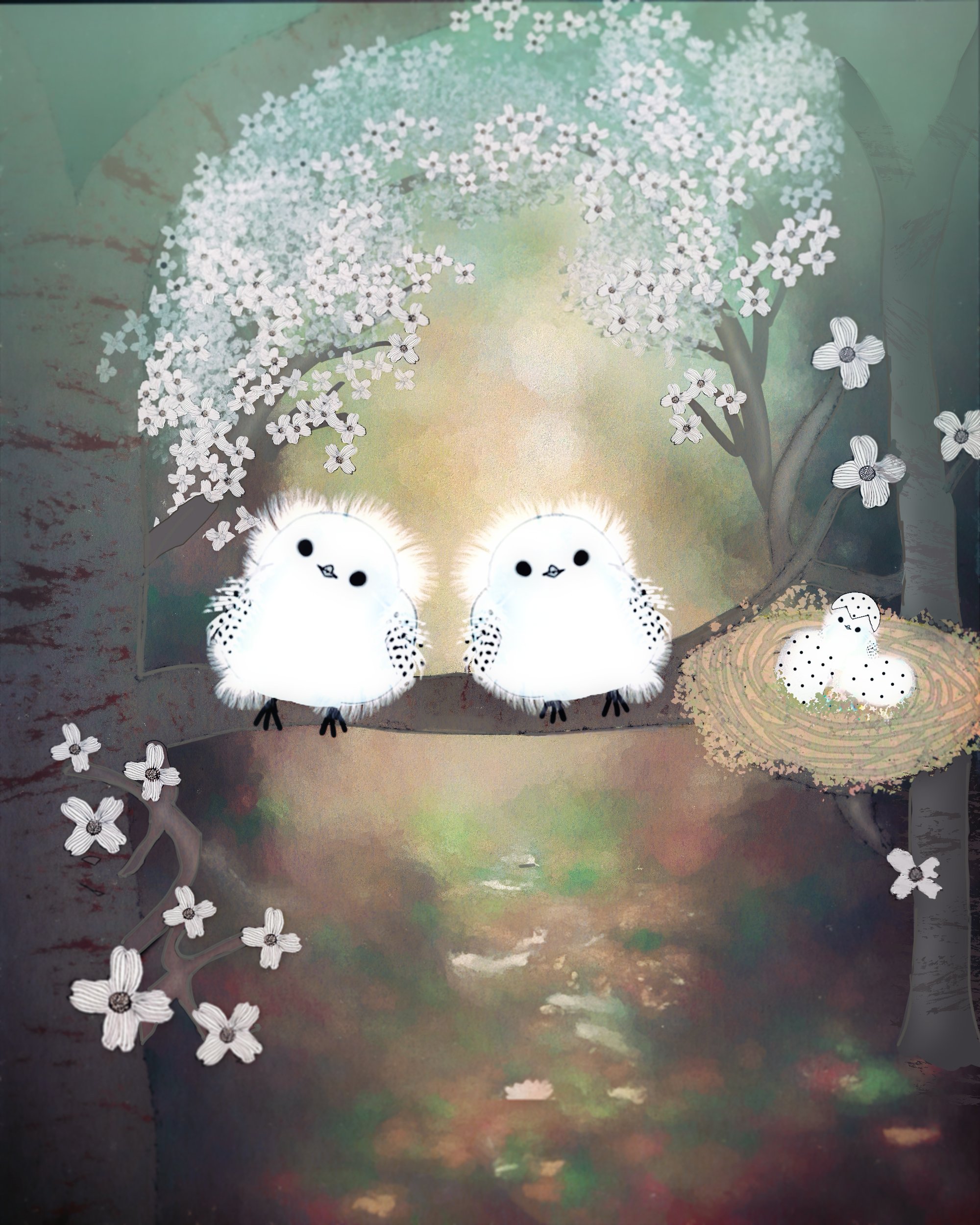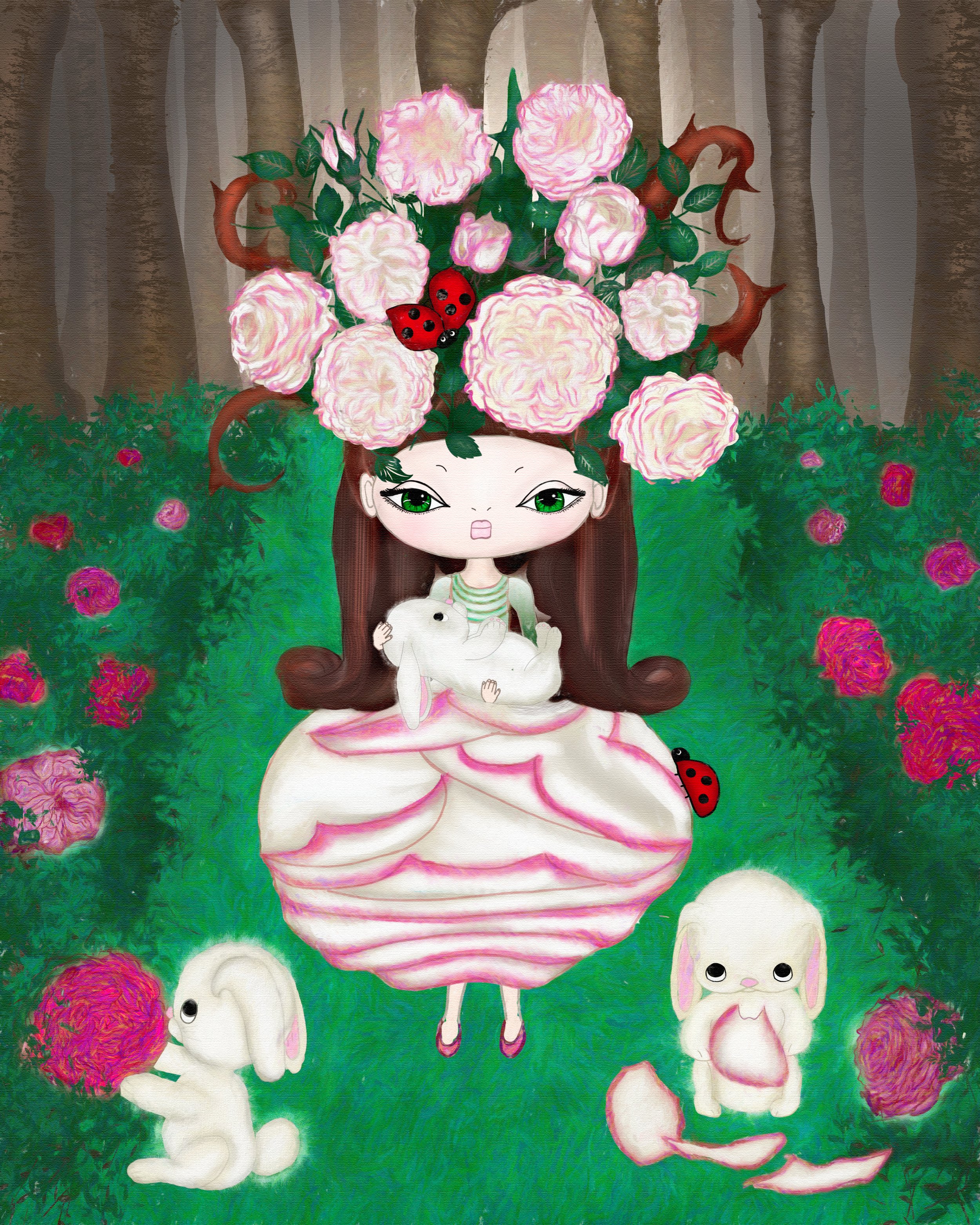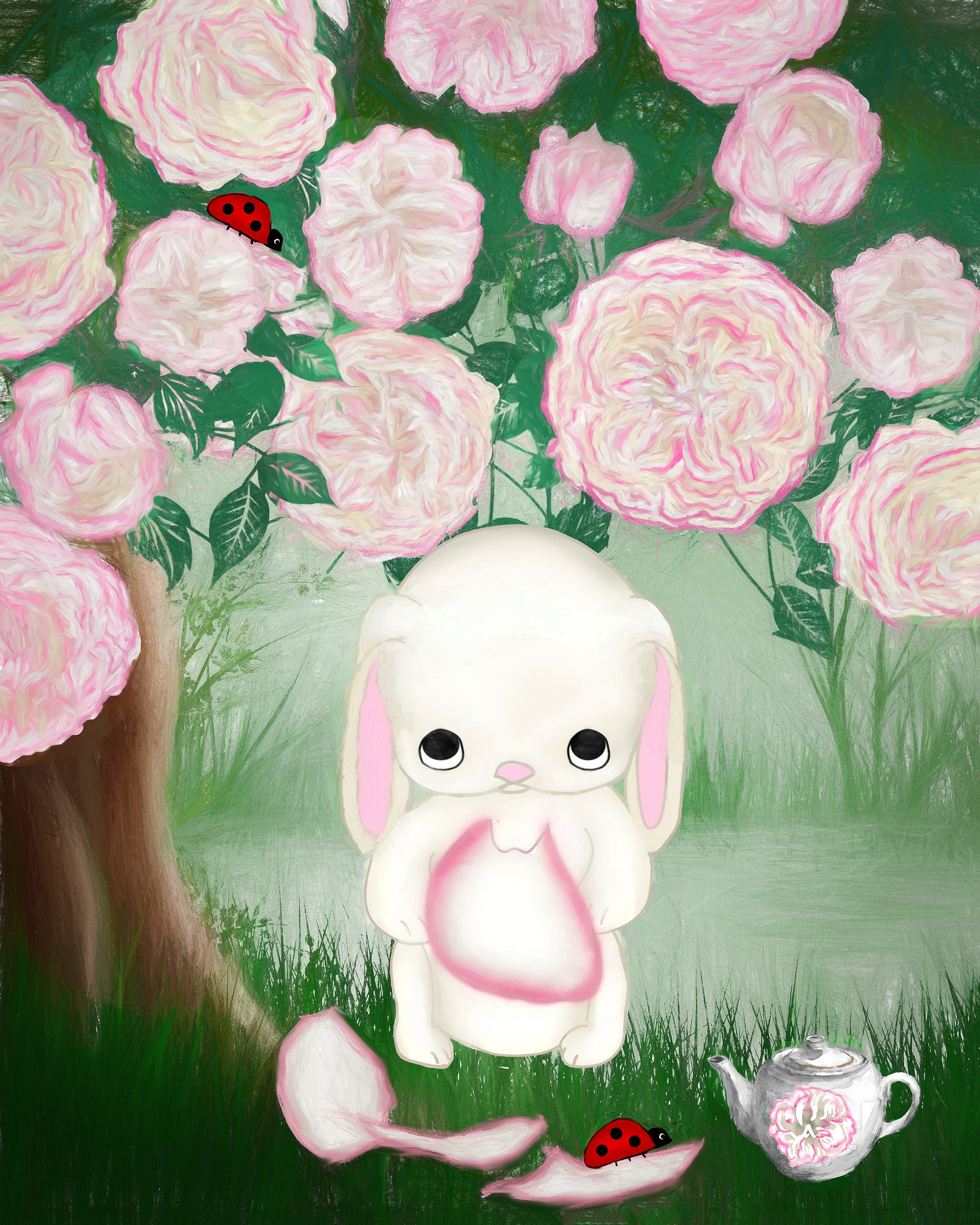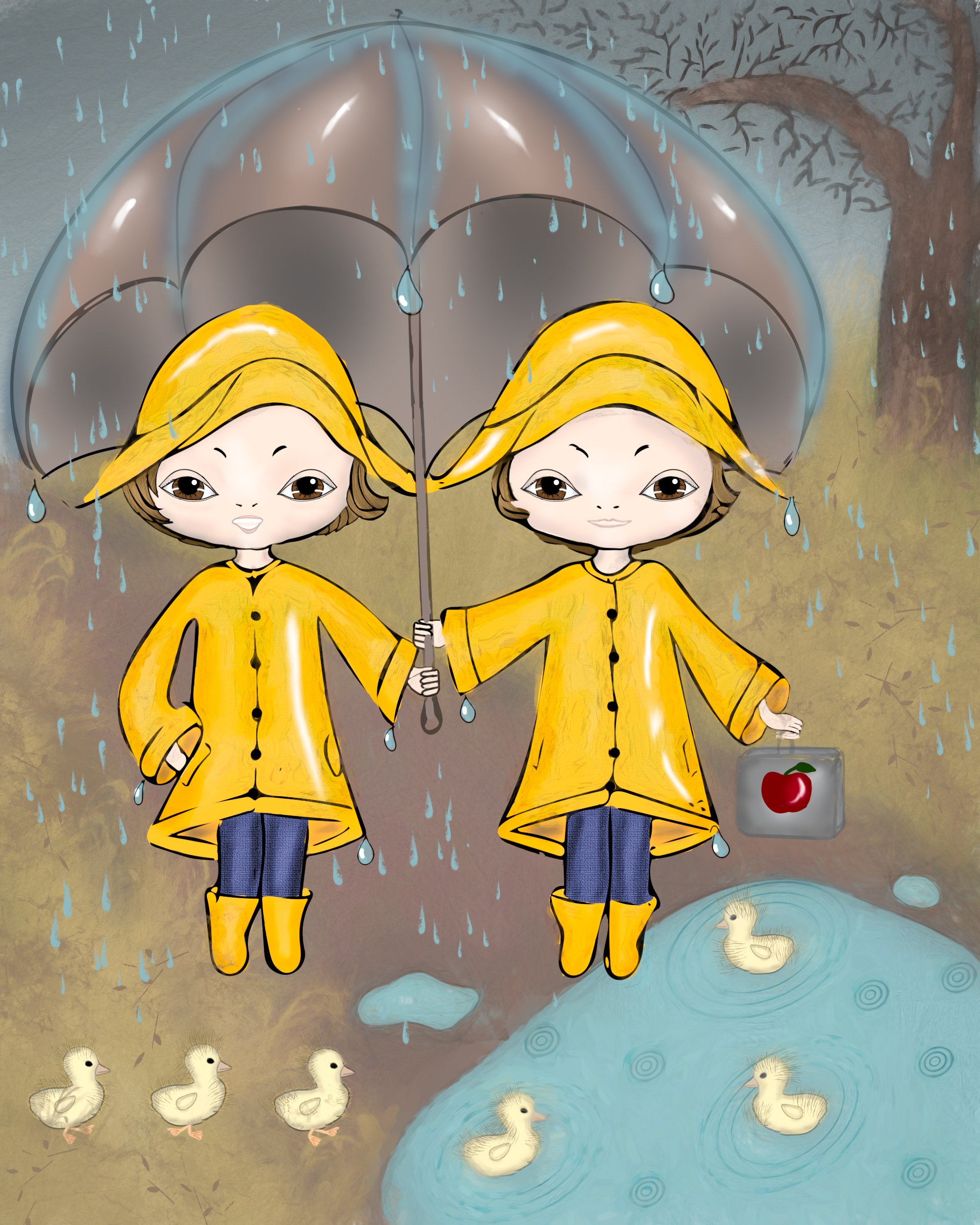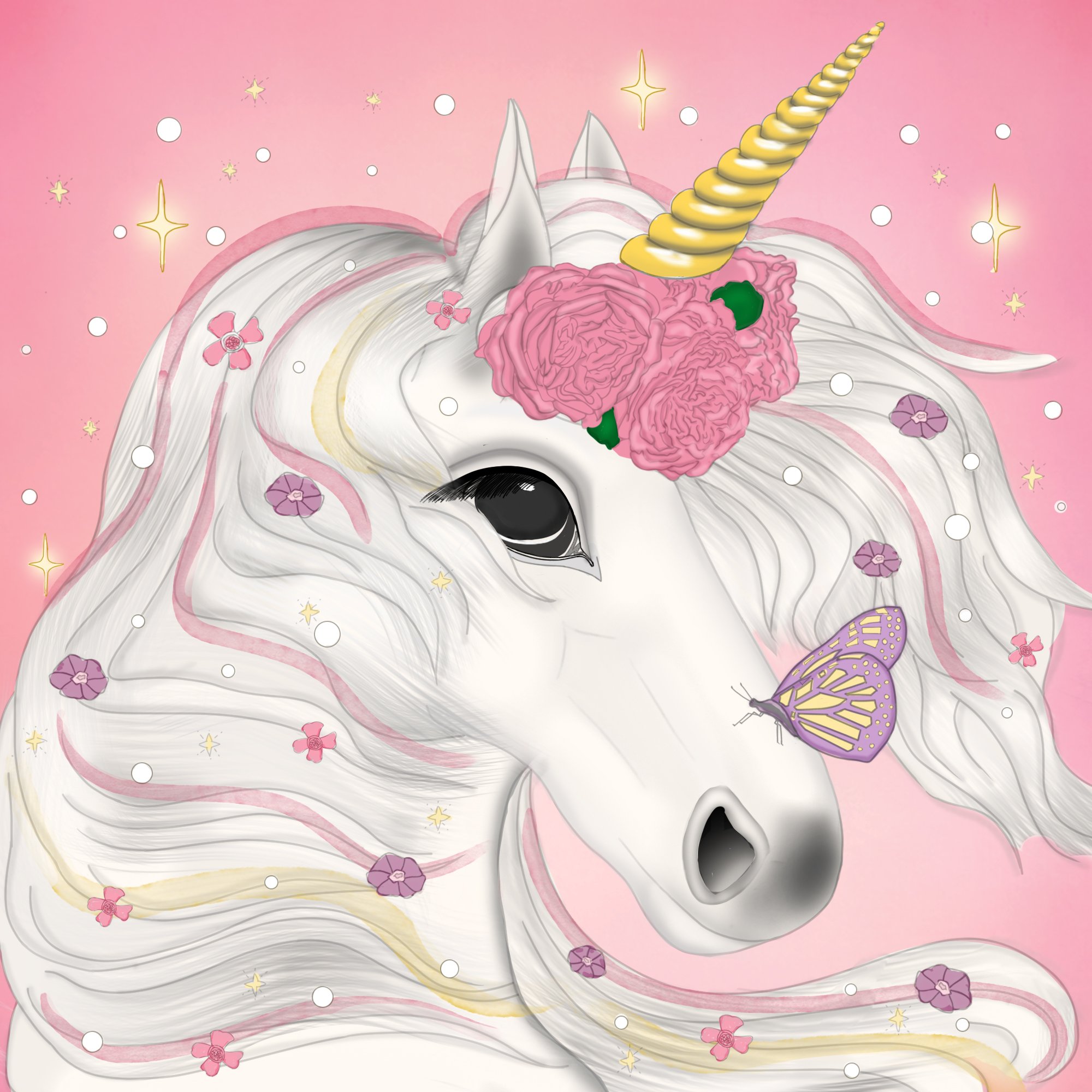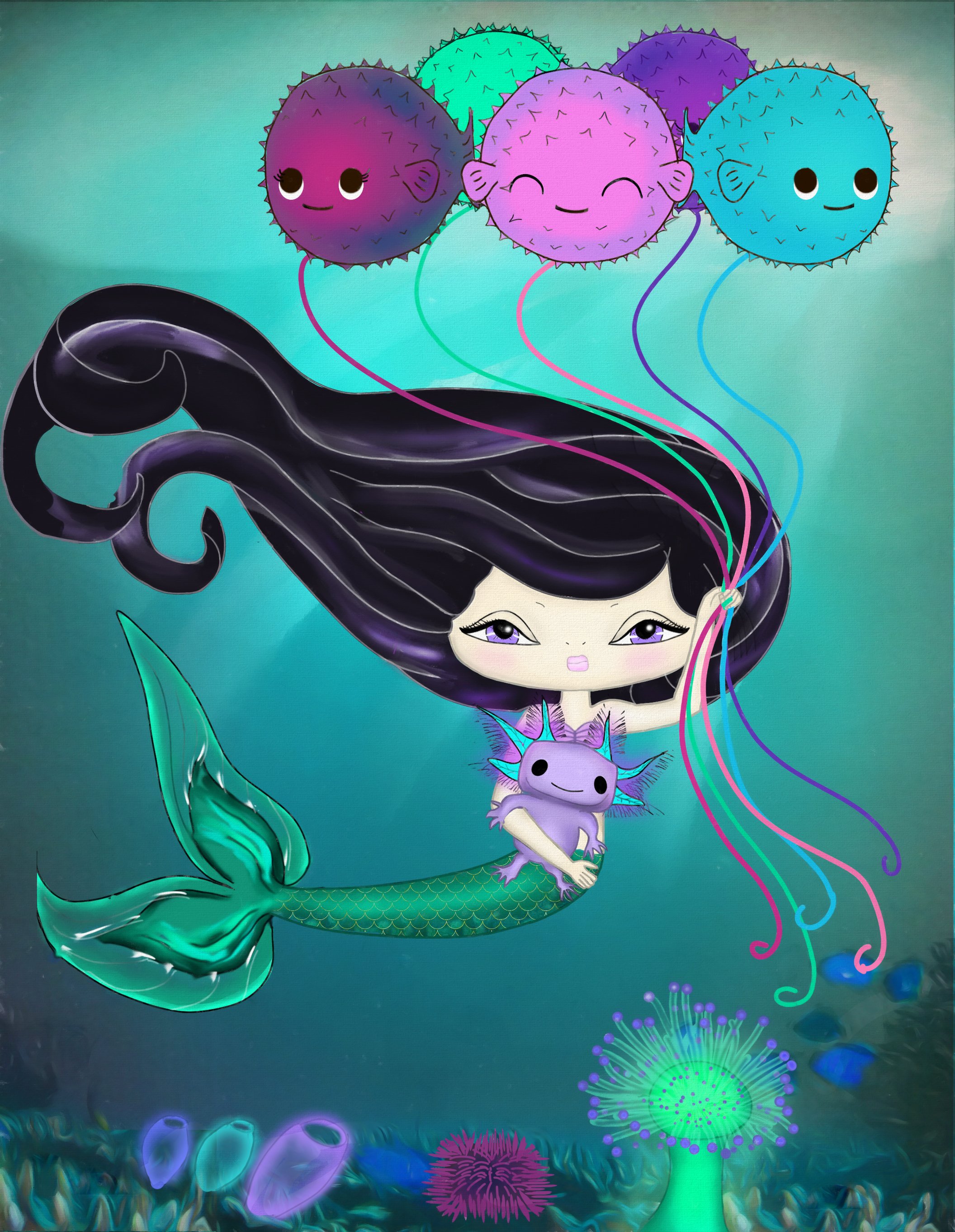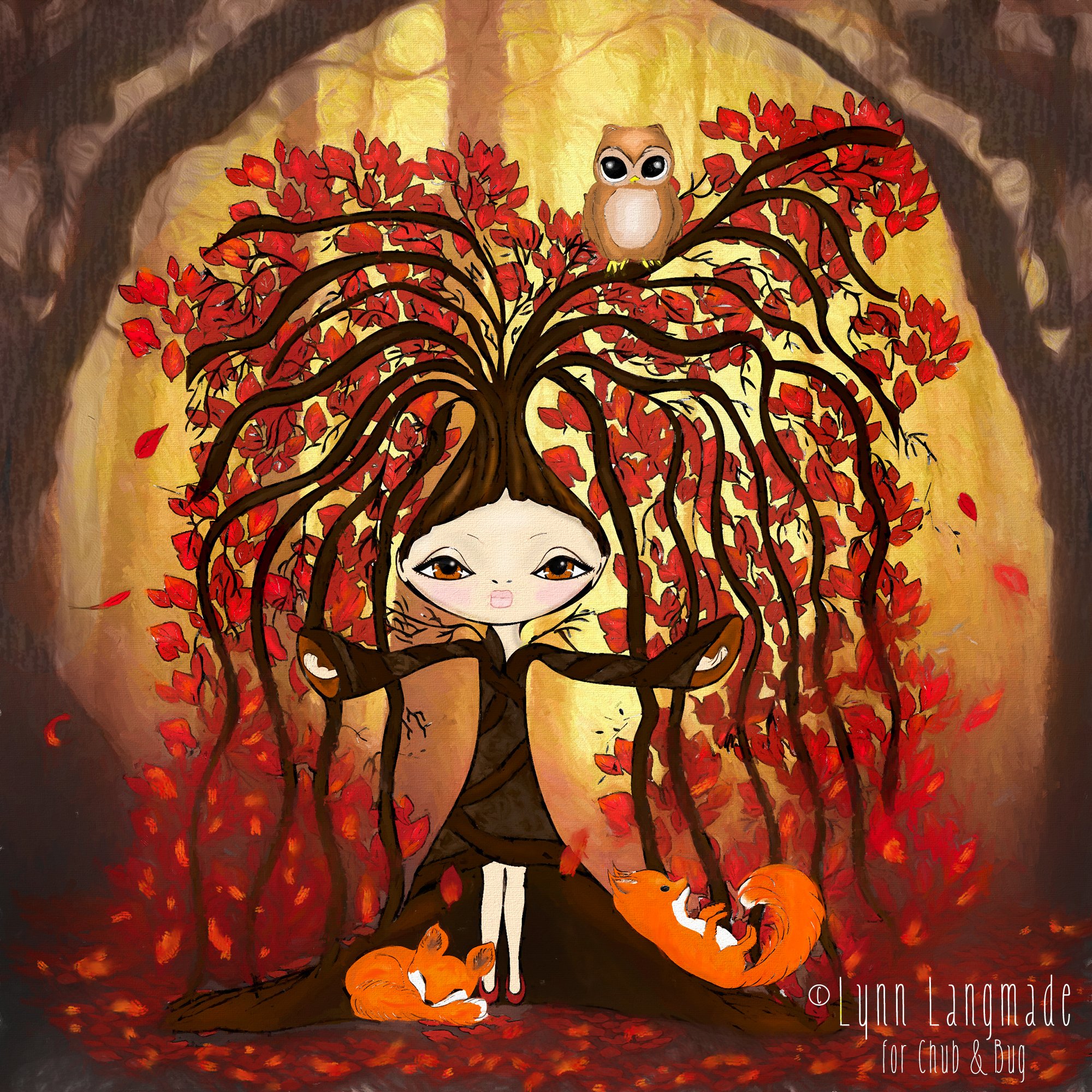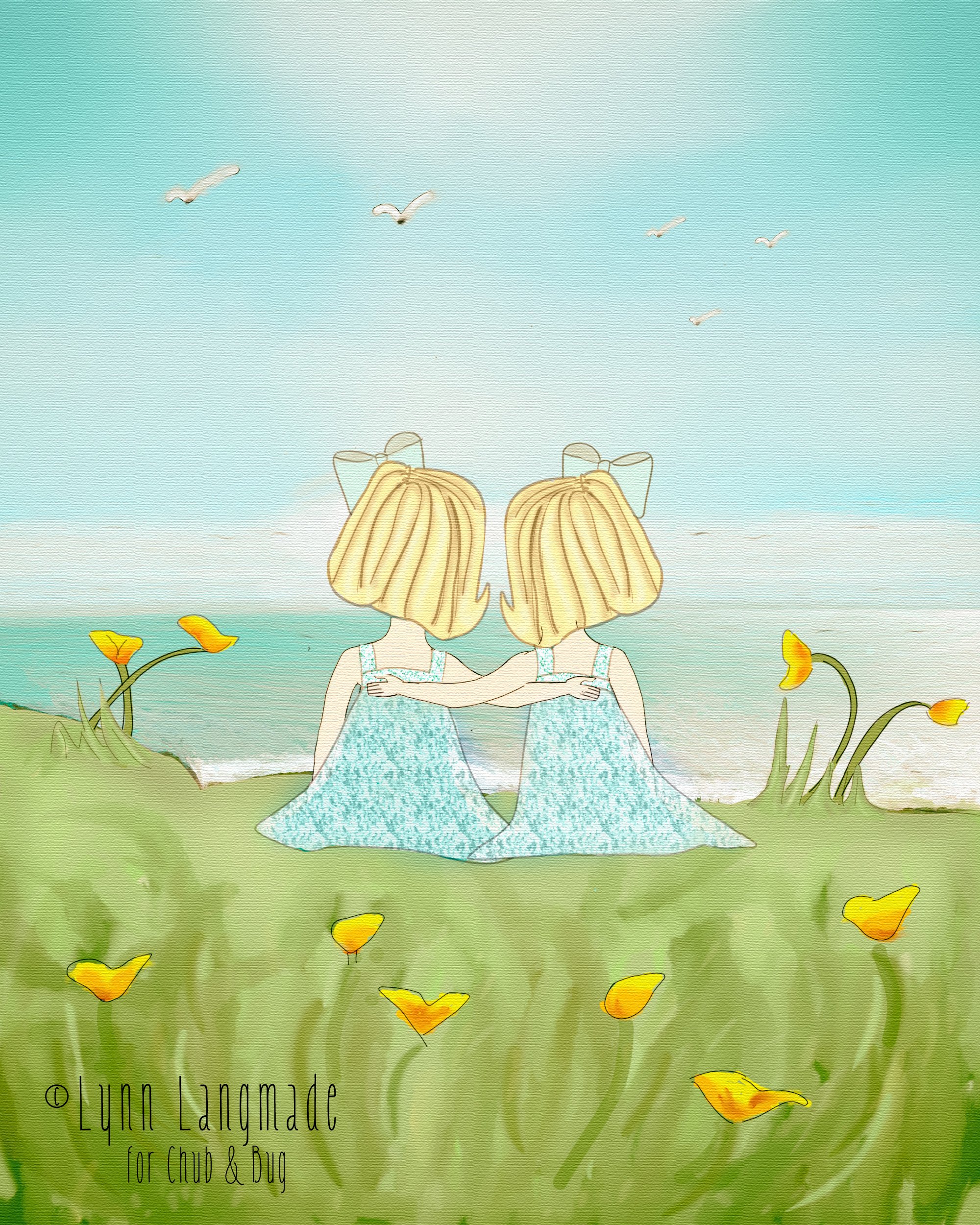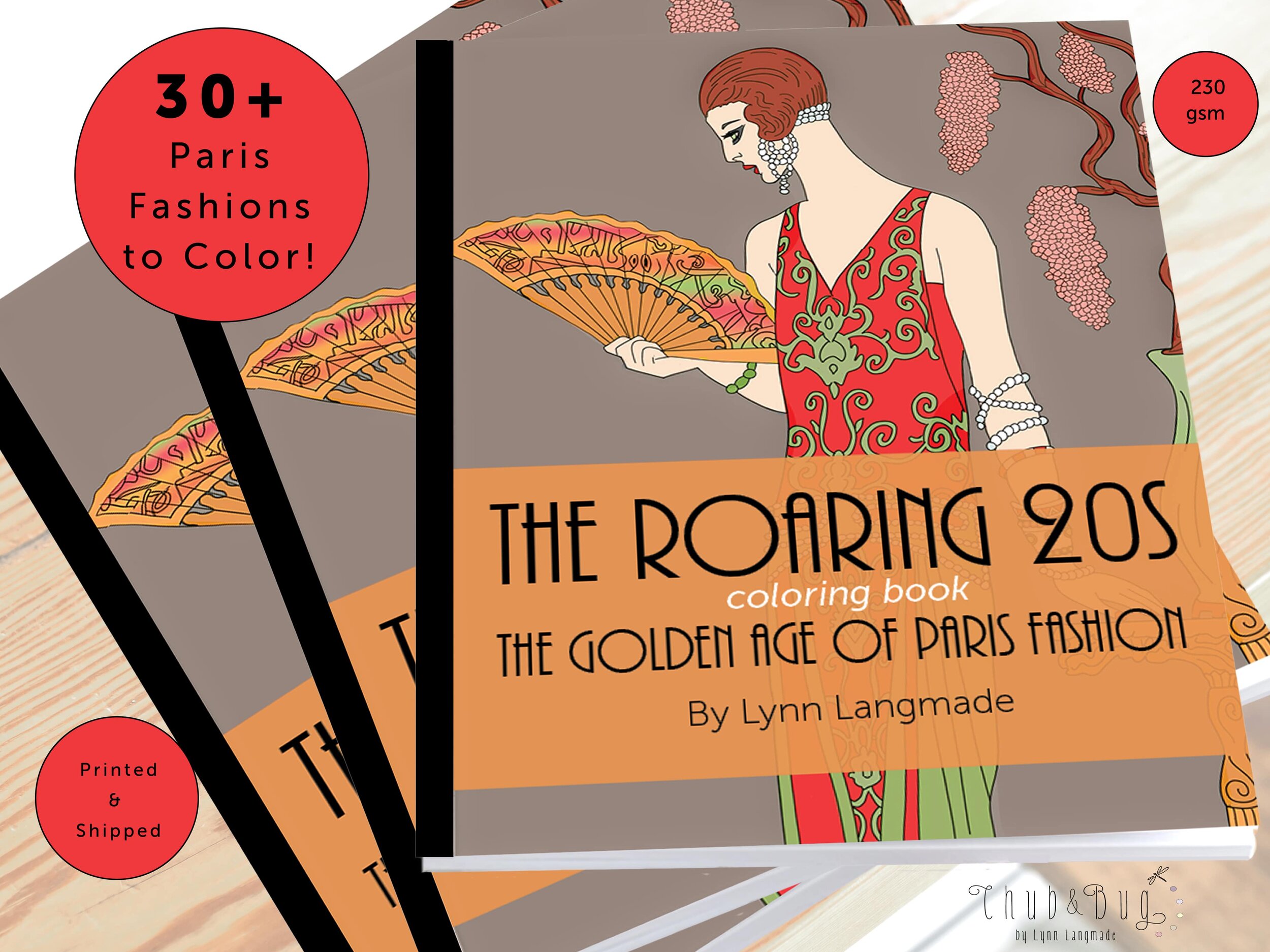Illustration vs Fine Art: The Art-iest Debate
Why Illustration Isn’t Just for Kids Anymore
When I tell people that I am an illustrator, they often say “Oh my gosh, you do kid's books?!?” or “I remember you when you were a child.” People tend to think of illustration as a subcategory of fine art when it’s a completely separate discipline.
In fact, some argue that illustration isn't significant because it's commercial and just for kids. Moreover, due to the advent of digital technology and tools like Photoshop, they also assume fine art is the only relevant means of expression.
This couldn't be further from the truth. Illustration is also an important form of fine art and can be no less “fine” than painting, for example, if done with the proper technique and style. Although illustration has a very rich history and a place in virtually every industry in the world, it's been gaining many new practitioners over the last decade. Indeed, digital tools have greatly emancipated illustrators to more easily create the work that they want to create–helping to redefine what "illustration" has come to mean.
In this post, we’ll pit illustration vs art, taking a look at what makes each discipline unique. We’ll also highlight some of the artists who have challenged these preconceptions about illustration and art by doing both!
By the end of this post, it’s our hope that you’ll come to see why illustration is a significant artistic discipline in its own right.
What Is Illustration?
Let’s start at the beginning shall we? Illustration is a form of art that uses a variety of visual elements to create an idea or story.
Illustration can be used for a wide range of “commercial” purposes, including graphic design and advertising, education, film and even television. It’s also frequently used to create images–pictures or designs–for use in books, magazines, posters, and other media. In the past, these images were developed with pencils or pens and markers, but now are created purely through digital means.
Traditionally, the primary purpose of illustration was to bring a story to life by using visual representations of the characters, places, and events described in written text. As such, illustrations helped readers understand more about characters' personalities than words could convey on their own; they also provided visual context for stories that might otherwise require lengthy explanations before the plot could be understood.
Beatrix Potter’s Peter Rabbit Illustration
One of the best examples of illustrations used to bring a character to life in books is Peter Rabbit, created by Beatrix Potter. Potter’s illustrations of the protagonist Peter were so well done that the images themselves began to stand in for the narrative itself. Can any of us imagine Peter’s story without Potter’s illustration? Would the story have resonated so profoundly without Potter’s illustration? Likely not. The images Potter created were so profound, her books are still being read around the world by children today. Indeed, Peter Rabbit is still one of the most sought after themes for nurseries and kids’ rooms.
So while illustration is used in many industries, as I’ve just shown, it has a special relationship with the publishing industry. Illustration is used as part of an advertisement (for example, an image on a magazine); it may appear on book covers or inside pages (illustrating short stories); or it may accompany comic strips within comic books themselves.
A great example of illustration used for comics is the world-famous comic strip Peanuts and its hero and anti-hero–Snoopy and Charlie Brown–created by Charles Shultz. Comic strips also show us how illustration can be humorous, developed explicitly to elicit laughter from its audience.
Charles Schultz’s Peanuts Comic Strip
In contrast with cartoonists who create comic strips, illustrators who work in the graphic design and advertising industries often work with both imagery and typography to create logos and branding materials in marketing departments within companies like Coca-Cola® or Proctor & Gamble® .
Original Coca-Cola Logo at Illustration
Sometimes illustration is confused with fine art because both involve creating artwork based on existing concepts or stories. However, while the two are similar in many ways, they have distinct differences: illustrations are often made with an intention to sell them or what we call a “commercial purpose”; whereas fine art is usually taken to be an individual effort by one artist who creates the piece completely from scratch using just his/her own inspiration. However the “purpose” of both illustration and fine art is only one way these two art forms differ from one another. Later in this post, I discuss how purpose, price, quantity, attribution differentiate illustration from fine art.
However, we should be careful not to assume that all illustrations are created for commercial purposes. Probably the best example of illustration developed without a purely commercial purpose is the work of illustrator Norman Rockwell who drew many covers for The Saturday Evening Post magazine over multiple decades in the 20th Century. In some ways, Rockell’s work (and his illustration “style”) became synonymous with the word “illustration” and people automatically think of his art when they hear the word. His work is also largely why so many in the art world don’t see illustration as a significant art form in its own right. But in fact, Rockwell is just one of hundreds of illustrators whose work has come to saturate culture and define a quintessentially “American” ethos.
As you can see from the examples I’ve provided above, the artform we call “illustration” has many applications in society and new applications are being created every day. Illustration is all around us. It’s quite literally everywhere: on buildings, freeway embankments, transportation (trains and buses), magazines, newspapers, books, websites, apps, video games, and even our food! Indeed, illustration is so essential to modern life, it’s almost impossible to image society or even “civilization” without it.
What Is Fine Art?
When we say "fine art" what do we mean? It can be confusing because it's used to refer to multiple things, including:
The visual arts (painting, sculpture, drawing, printmaking, photography, video), as opposed to literary or musical arts
The creation of beautiful objects for people to enjoy and value
The academic discipline of studying the visual arts — often called art history
A specific type of artwork that uses the visual arts mentioned above (e.g., fine art photography)
So what is "fine art"? Well...it depends on who you ask! But generally speaking: Fine Art refers to any artwork created by an artist whose objective is to express something meaningful or emotional through their work. This can include paintings made with oil paints on canvas or drawings made in charcoal pencils on paper; anything from a photograph capturing a moment in time or an animated film telling a story will fall into this category as well.
Fine art is not something new; in fact, it's been around for centuries. It started in Ancient Egypt when artists began decorating their tombs with drawings and paintings of gods and goddesses who would protect them from harm in the afterlife between 3000 BCE and 100 AD. The Egyptians also created murals depicting important events such as royal births or battles won by pharaohs (the rulers).
Illustration in Nefertari’s Tomb
This tradition continued throughout history until finally reaching Europe during the Renaissance period.Fine art painting, or how we think of painting today, largely comes from the work created during the Renaissance. Renaissance means “rebirth” and as the name implies, fine art experienced a “rebirth,” or flowering of unprecedented scale in continental Europe, especially Italy.
During this period we saw a dramatic shift from abstract or non-representational art to realistic representations made possible by advances in art techniques, such as perspective, foreshortening and proportion, sfmumato (gradual shading) and chiaroscuro (contrast of light and shadow).
While there are many masterpieces that were produced by various painters during the Renaissance, including Michelangelo, Leonardo da Vinci is widely celebrated as the most talented artist of the period and potentially of all time. Da Vinci’s painting“The Last Supper,” which depicts Jesus Christ's final meal with his disciples before crucifixion, is considered a fine art masterpiece.
The Last Super by Leonardo Da Vinci
The Origins and History of Illustration
As we’ve suggested earlier, illustration is the art of communicating ideas or images to others through the use of visual media. Illustrations can be created in a variety of media, including drawing, painting, photography, printmaking, design and commercial art.
Your first exposure to the world of illustration was probably in elementary school, when you were assigned a book report and had to find out what it meant when your teacher marked it with an A+. The answer: It was “excellent”—in other words, great. But where did this word come from?
The word “illustration” comes from the Latin word illustratio: the act of making something clear and obvious by means of examples or explanations. In fact, illustration is one of the oldest forms of visual communication ever used by humans. But how did it come about? Who invented illustration?
Like fine art, illustration also has a long and illustrious history. From cave paintings, to Egyptian hieroglyphics, to religious icons and beyond, illustrations have set the written word into visual images for eons.
The oldest known illustration comes from Indonesia and is over 45,500 years old.
Oldest Illustration
Similarly, the Egyptians may have invented fine art, but they also invented illustration as an art form. Hieroglyphics, first developed in 3100 BC, is a pictographic alphabet, which uses images to convey words.
Hieroglyphics on the Egyptian Tomb of Seti
Early religious illustrators came to use the art of illustration not only to capture the essence of religious people, but also to convey the church's dogma and teachings through these images. Like all illustrations, these images, known as the first religious “icons,” had a higher purpose beyond simple representation, which was to convey “ideas.” The oldest Christian icon dates from 6th century CE and depicts an image of Christ Pankreator.
As noted earlier, illustration as an art form has a special relationship with books. As human beings have been around for thousands of years, so too have illustrated books. The earliest known book to be illustrated dates back to the time of King Pepi II (2325-2284 BCE). The Egyptians used illustrations in their religious texts, including the Book of Caverns and the Book of Gates. These books were created as a reminder for people about what life was like in ancient Egypt, specifically important events that happened during those times.
The Book of Caverns contains seven tableaus, which includes six tableaus that are divided into two and a final tableau. It “illustrates” the journey of the sun god Ra as he navigates through the six caverns of the underworld.
The Book of Caverns in 7 Tableaus
Illustrations continued to be used throughout history as a way to preserve information, teach people things they needed to learn and entertain them with stories that had come before them. One of the primary ways illustrations were created was in woodcuts, which were essentially images that were carved into wood by hand. As you can imagine, woodcuts were difficult and expensive to create.
Woodcut illustration of woodcut making
Artist and illustrator Albrecht Durer, used woodcut techniques to develop some of the most memorable illustrations. One of the most famous examples is his Rhinoceros illustration created in 1515 based upon stories he had heard of one being delivered to Lisbon. He’d never actually seen one, so you’ll notice it’s anatomically incorrect.
Albrecht Durer's Rhinoceros Illustration, 1515
So while illustrations have existed since ancient times as visual aids for storytelling, they didn't become widespread until the invention of movable type printing via Gutenberg’s printing press in 1454.
This innovation allowed artists, illustrators, and engravers alike to print their works on paper or parchment instead of carving them into stone or wood blocks which required more physical labor. It also enabled them to convey complex ideas through images instead of words alone—which is why reading even today can feel like sitting down with an illustrated children's book or comic book.
What Is the Difference between Illustration and Fine Art?
So while we’re comparing illustration vs fine art, most scholars and critics agree that there exist four major qualities that distinguish fine art from illustration:
Purpose: In general, fine art is created with a decorative or purely aesthetic purpose, whereas illustration is seen as being created to complete a function as in convey ideas as we’ve discussed above.
However, some great fine art was created with a political purpose. A great example is Picasso’s cubist painting Guernica. Likewise, some illustration, especially Kawaii style seems to exist for the sake of itself, having no other purpose that to be.
Price: In this same vein, if illustration’s purpose is to complete a function, illustration is “commissioned” for commercial purposes, which means the art was created for money. In contrast, most fine art is not created with the explicit purpose of being sold. While much fine art does wind up in elite art galleries and is eventually “sold” for a very high price, it’s not created with the express purpose of being sold. In other words, in order for most illustrations to come into being a client has to first “hire” an illustrator to do the work. A fine art sculptor will sculpt artwork independent of whether they ever sell the work of art.
Having said that, it’s important to realize that this generalization also doesn’t hold water. Most illustrators create many illustrations for the sheer purpose of creating them, i.e., with no interest in ever selling them for profit.
Quantity: Due to the advent of the printing press and the fact that so many illustrations are created to illustrate characters and scenes within books, a major difference between illustration and fine art is quantity: there is usually only one fine art piece in the world (or very few of them) while there could be an infinite number of the same illustration, printed in any medium throughout the world.
Like these other rules, there are exceptions. Some illustrations are created on permanent mediums like canvas, stone or wood, making it difficult to reproduce them and some fine art, especially digital fine art, can be reproduced easily making many copies or versions of the work. Some fine art is also created as a “limited series,” thus already assuming the work will be immediately reproduced.
Attribution: Because fine art is rarely commissioned for a commercial purpose, fine art is always associated with the artist that created it. The work, in other words, is attributed to a specific artist, allowing that artist to develop a reputation. In contrast, because so much illustration is commissioned for a commercial purpose, illustrations are rarely attributed to the artists and the works become the “intellectual property” of the business or corporation that commissioned them.
Obviously there are exceptions here too. We’ve provided two great examples already of great illustration that was commissioned for a commercial purpose, such as Potter’s Peter Rabbit and Schultz’s Peanuts, yet both of these illustrators have managed to have their work attributed to them and have become world famous as a result.
Illustration Is Not Just for Kids
Illustration is not just for kids. Illustration is a visual art form that takes real artistic skills. Illustrators not only study fine art techniques or basic elements, such as line, color, value, value, shape, form, space and texture but also the techniques of perspective. They also leverage principles of design: typography, hierarchy, and color!
Illustration is a form of art that is used to help tell a story. It is often used in graphic design, children’s books, comic books and advertisements. Unlike fine art, illustration has been traditionally associated with commercial products such as greeting cards, posters and book covers. Illustration can also be found in many non-commercial environments.
Many artists make a living as illustrators, but there are also many people in other professions who use illustration such as animators, architects or industrial designers. Pricing for most illustrations depends on both the size of the work (larger pieces will cost more) as well as its complexity (more detail or additional characters). Pricing per character starts at $100 per hour depending on complexity–so if you want an intricate drawing with twenty characters it could cost you $2000!
Famous Fine Art Painters Who Were Also Illustrators
What’s always interesting is the way we have created artificial boundaries around “fine art” and “illustration,” suggesting that they have always been two separate things. But the irony is that for most of art history, artists didn’t see them as separate. Many fine artists in particular were devoted to both traditional fine art and illustration. Below I’ve included three examples of great painters who completed classic fine art and classic illustration.
William Blake (1757-1827)
As an artist, philosopher, and poet, William Blake was known for his unique style that incorporated elements of mythology into his paintings. He often painted more than one image on each canvas at different times during his career–some would say "illustrating" his own poetry by adding visual context to the words he wrote. His most famous illustrations were engravings he created for his well-known book of canonical poems, Songs of Innocence and Experience.
Blake’s Illustration to the Divine Comedy
When Blake was 65, he began his largest illustration project yet. He set about to illustrate Dante’s Divine Comedy. While Blake died before he could complete this project, he did leave behind 102 illustrations developed exclusively for this book.
William Blake is not only one of my favorite illustrators, he’s also my favorite poet :)
Henri Matisse (1869 -1954)
Matisse is now considered to be one of the greatest artists of the 20th century and was the leader of the avant-garde Fauvist movement in art between 1900 and 1910. Matisse’s fine art paintings were known for their experimentation with wild and dissonant color as a means to express emotion.
What’s interesting for our purposes here is that although Matisse is now predominantly known as a painter, he was also a printer, a sculptor and also an illustrator.
In 1935, Matisse was commissioned to illustrate an edition of Jame Joyce’s Ulysses. Matisse created six etchings and 20 preliminary illustrations for the edition. There were only 1500 of the edition printed and 250 of those were signed by both the writer and the artist. Copies of this super rare edition are worth almost $10,000 today.
Salvadore Dali (1904-1989)
Dali was the most famous surrealist painter of his generation. In early childhood he studied the Renaissance painters and also Cubist painting techniques before settling on Surrealism in the 1920s. His surrealist masterpiece The Persistence of Memory is taught in every introductory art history course. Like both Blake and Matise, Dali was incredibly talented in many artforms, including graphic design, film, sculpture, and photography. One other artform he was adept at was illustration.
Dali’s Illustration for the Adventures of Alice in Wonderland
Similar to Matisse he also chose to illustrate a classic piece of literature. In 1969, he illustrated Alice's Adventures in Wonderland. The edition is extremely rare and is now worth thousands of dollars. This edition was so popular that on the 150th anniversary of the book, a new version has printed.
Other Great Fine Artists Who Are Also Illustrators
Today, the difference between commercial illustration and fine art is a gray area. The lines are still there, but they're not as stark as they once were. Illustrators like Jeff Soto and David Mack work in both fields—Soto's work graces gallery walls while his t-shirts fly off the shelves at Hot Topic; Mack's paintings have been exhibited at auction houses like Sotheby's and Knoedler Gallery (he also designed the logo for Marvel Comics' successful Iron Man franchise). While these artists may be considered illustrators by their clients, they're also recognized as fine artists in their own right.
The same goes for other artists who started out working primarily with children's books or comics: Bill Watterson created Calvin and Hobbes before being recognized as one of America's greatest living cartoonists; Jules Feiffer was best known for his acerbic cartoons before he received critical acclaim for his plays and graphic novels; Art Spiegelman had already won two Pulitzer Prizes when he won the first award ever given specifically for comic books with Maus II: And Here My Troubles Began; Dave McKean made his name illustrating groundbreaking works such as Sandman before going on to produce photography collections that have been exhibited all over Europe; Andi Watson started out writing children’s fantasy novels before moving onto more adult fare such as The Last Dragonlord series.
Styles of Illustration
The primary reason that illustration is not seen as a high art form is likely due to the large variety of styles that are used by its practitioners. There are many different styles of illustrations and some of them are quite dense, complicated, showcasing a mastery of fine art techniques, while others celebrate consumer culture and leverage minimalism as an aesthetic, which might falsely suggest the art was “easy” and therefore doesn’t demand mastery of art techniques.
Each illustration style below also has a unique theory and practice around color and how to use it to convey mood. To learn everything you need to know about color theory, check out our deep dive on the topic and grab our FREE color scheme kit, which includes a guide, worksheets, and test pages to help you get started with color theory.
The most common styles of illustration include:
Vintage and Retro: This style is reminiscent of old photographs, illustrations and art. It’s a very bold look that can create a lot of impact on your page or site.
Realism: This style uses realistic elements like skin tones, hair color, wrinkles and other aging effects to give your images a more realistic look. Norman Rockwell is an example of an illustrator who practiced “realism” in his work.
Fantasy: In this style you can add supernatural elements such as fairies, dragons or vampires to give your images an enchanted feel
Fashion: Fashion illustrations are used in magazines and advertising campaigns to promote clothes or items for sale at stores such as H&M or Target etcetera…you get the idea!
Line Art (Lines): This type of graphic design uses black lines only–no shading required here! If done properly it can make an image look very clean & crisp; almost like something out of magazine ads back before computers existed (remember those days?). You know what I mean? :)
Kawaii: Kawaii illustration style comes from the Japanese word for “cute” and includes a very pared-down aesthetic that features very cute, small, and fragile animals or people. To learn more about Kawaii illustration style and its history, check out the in depth dive on the subject in a recent blog post.
As you can see, there are a wide variety of illustration styles. Some of these styles are quite complex and utilize very advanced drawing and art techniques to create incredibly realistic looks. Some illustration is so realistic that it could easily be mistaken for a photograph. Likewise, some “fantasy” illustration leverage so many fine art techniques that it could be mistaken for a painting or other visual fine art.
At Chub & Bug we specialize in fantasy, fashion, line art and Kawaii illustration styles, especially art for nurseries and kids’s rooms. But also for adults who are kids at heart and love looking at cute, adorable things.
Some of our most popular work is fantasy and Kawaii style illustration and artwork.
You can see examples of our fashion and line art, but looking at our fashion coloring books and fantasy line art coloring pages.
Illustration Is Fine Art
Illustration is a visual art form that combines the elements of drawing, painting and text. It can be used for both commercial and non-commercial purposes. The term "illustration" comes from the Latin word illustrare, meaning "to bring forth" or "bring to light" as in "the illustration of a book". In modern usage, this definition could apply equally well to an image on a printed page or a film's title sequence—but most would agree that one major difference between these uses is that film titles are never intended as standalone works of art.
So while illustration and fine art are similar, illustration is more than just creating an image, it's telling a story using pictures. Sometimes the pictures alone create the story and sometimes they reveal words hidden within them. Ultimately, illustration is a form of communication, and is used to express ideas and convey information in a way that words cannot achieve on their own. Illustrations allow us to break through the language barrier, because they can reach people in places where they are, without needing any translation.
I’ll close by suggesting that while illustration is fine art, in the sense that all art attempts to tell a story with pictures, fine art is also illustration.
